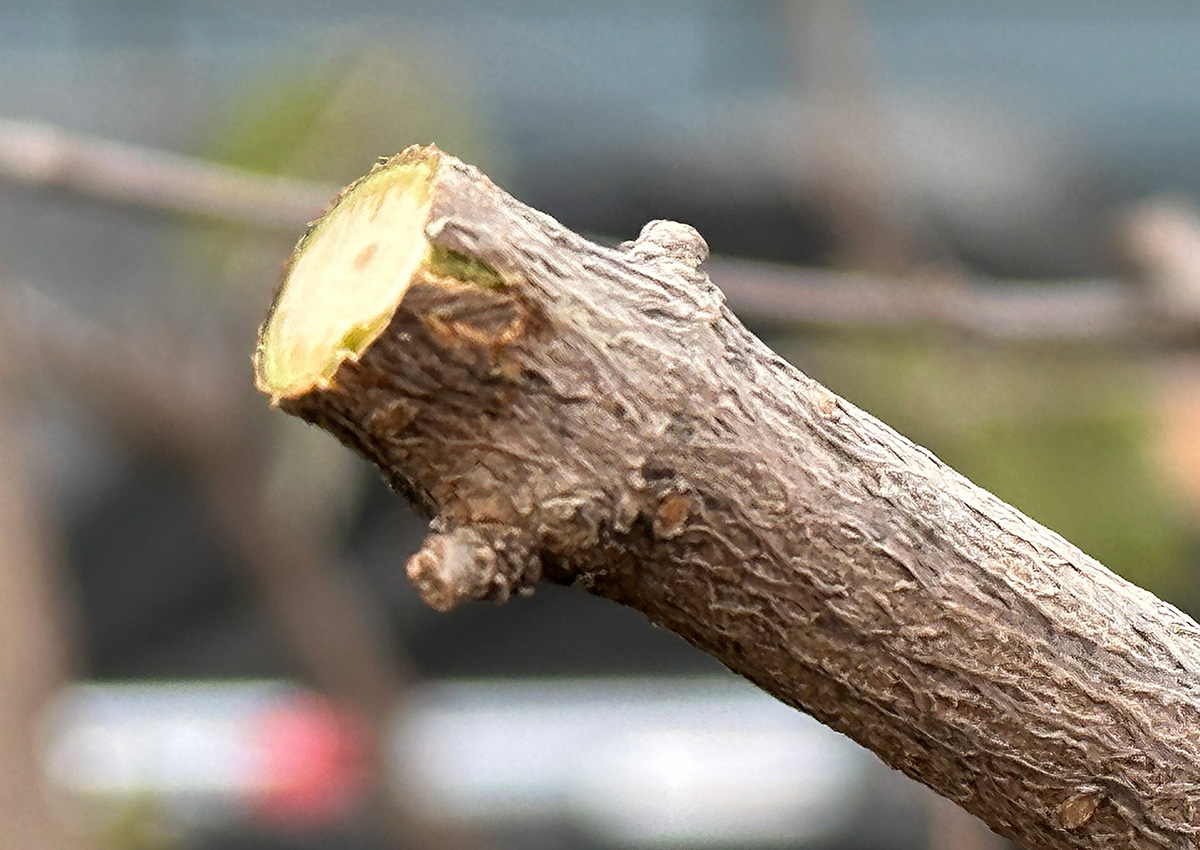
The mild days of winter offer gardeners an opportunity to tend to tasks that are best done when the landscape is dormant. One of those tasks is the rejuvenation or renovation pruning of shrubs. This type of work is not for the timid, as it is rather aggressive. The purpose of this task is to take an overgrown or poorly formed plant and selectively remove a substantial amount of its structure to encourage a renewal of healthy growth in the spring. All pruning encourages new growth; rejuvenation pruning results in robust growth. When properly executed, shrubs can be given new life and keep their natural form even if reduced in size. A variety of species lend themselves to this technique, and I have worked on many viburnums (Viburnum spp. and cvs., Zones 3–9), lilacs (Syringa spp. and cvs., Zones 3–8), mock orange shrubs (Philadelphus coronarius, Zones 4–8), and burning bushes (Euonymus alatus, Zones 4–8).
Why prune during the dormant season
Winter pruning is beneficial, as most shrubs are bare or have reduced leaves, making the overall structure of a shrub as well as any issues with growth easily seen. Each of these issues needs attention, with decisions made as to how best to correct the problem. This is not the time for concern about saving spring-flowering buds, or about whether a plant is blooming on new or old wood. We must be focused on rejuvenating the shrub and be prepared for fewer flowers the first season after this work.

To get started, look for these issues in your shrub
First, gather your tools, which should consist of a good pair of hand pruners and at least one pair of loppers, all sharpened. If you have very large limbs, a pruning saw may be necessary. Take a step back and look at the overall form and size of the shrub. Consider how the shrub appears compared to the species standard and how well this shrub fits in the space where it is growing—essentially, is this plant performing the way you want it to? I call this the “big picture” assessment. You should also look for any problematic growth. This includes:
- Crossing or rubbing branches
- Misshapen, distorted, or misdirected branches
- Suckers
- Dead or damaged branches
If this is the first rejuvenation pruning for your shrub, you will surely find that a lot of work needs to be done.

Example: Pruning an overgrown Burkwood viburnum
The Burkwood viburnum (Viburnum × burkwoodii, Zones 4–8) in my garden had overgrown its spot by the patio. I have made a point of giving it a good clip to keep it in bounds after it blooms each spring, but that has just not been enough, and it was time for more extensive work. I started the pruning process slowly by bringing in the sides where branches encroach on a path or other plant, pruning back to a bud heading in the direction I want the new growth to go. (Cuts should be made at different levels along the branch so that new growth is staggered within the shrub.) I then thinned out clusters of twigs so there would be more air and light reaching the center of the shrub, encouraging interior growth and a healthy environment.

Branches growing backward into the center of the plant were next: I removed or pruned them to redirect them to head to the outside. Working with this semi-evergreen plant disturbed the leaves, which fell and made the branches more visible. (Wear a smooth jacket or you risk the leaves sticking to you.) I then cut back new growth to encourage branching and pruned old growth to reduce height and force new growth at lower levels.

When I was finally finished, there was a lot of air and room to grow where a mass of branches had stood only an hour earlier. It may look like a brutal assault, but by midsummer this Burkwood viburnum will be lush with new growth as a result of one afternoon’s efforts. This approach has sacrificed many of the blooms for this spring, but it will be worth it in future seasons. As I tell my shocked clients, I’ve done this before and the shrubs always come back better than they were.

For more tips on pruning shrubs, check out Fine Gardening‘s pruning project guide. And for more Northern Plains regional reports, click here.
—Marti Neely, FAPLD, owns and operates Marti Neely Design and Associates in Omaha, Nebraska.
Photos: Marti Neely
Fine Gardening Recommended Products

Sun Joe Cordless Telescoping Pole Chain Saw
Fine Gardening receives a commission for items purchased through links on this site, including Amazon Associates and other affiliate advertising programs.

Black & Decker 40-Volt Cordless Hedge Trimmer
Fine Gardening receives a commission for items purchased through links on this site, including Amazon Associates and other affiliate advertising programs.

Corona Tools 10-Inch RazorTOOTH Folding Saw
Fine Gardening receives a commission for items purchased through links on this site, including Amazon Associates and other affiliate advertising programs.



















Comments
Log in or create an account to post a comment.
Sign up Log in